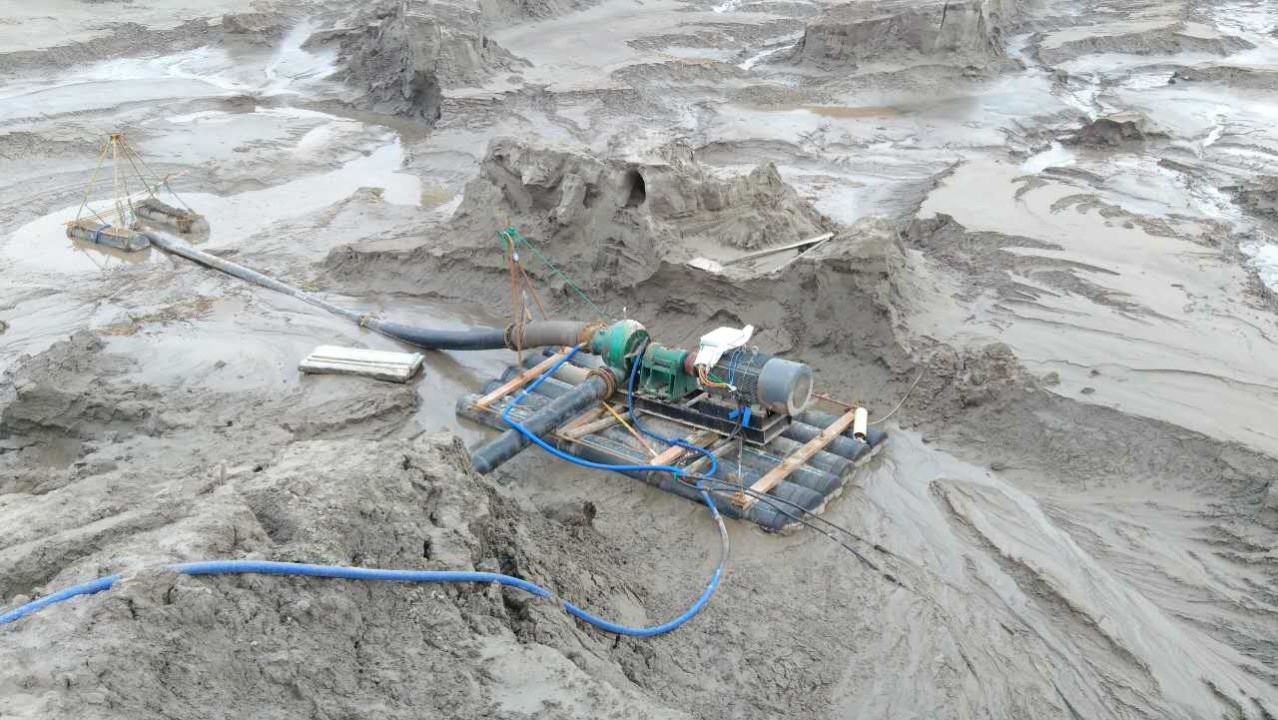Understanding Dredging
Dredging, a vital process in maritime and civil engineering, involves the excavation of sediments and debris from water bodies to maintain navigable channels, reclaim land, or extract valuable resources. At the heart of every dredging operation lies a sophisticated network of pumping systems, driving the removal and transportation of vast quantities of material. In this article, we’ll delve into the indispensable role of pumping systems in dredging operations, exploring the types of pumps used, their design considerations, and performance characteristics.
Before delving into the intricacies of pumping systems, it’s essential to grasp the fundamentals of dredging. Dredging serves multifaceted purposes, ranging from maintaining waterway depths for safe navigation to reclaiming land for urban development. It involves the removal of sediment, silt, and debris from the seabed, riverbeds, or other water bodies, using specialized equipment.
The Role of Pumping Systems
Pumping systems form the backbone of dredging operations, facilitating the efficient removal and transportation of excavated material. These systems are responsible for creating the necessary suction and discharge pressures to lift sediment-laden water and transport it to the desired location. Without robust pumping systems, dredging projects would grind to a halt, impeding maritime commerce, environmental conservation efforts, and infrastructure development.
Types of Dredge Pumps
Several types of pumps find application in dredging operations, each tailored to specific requirements and operating conditions:
- Centrifugal Pumps: Widely used in dredging, centrifugal pumps utilize rotational energy to impart velocity to fluid, generating centrifugal force to discharge the material. These pumps offer high flow rates and are suitable for handling slurries with varying viscosities.
- Submersible Pumps: Submersible pumps are designed to operate underwater, making them ideal for dredging applications where immersion is necessary. These pumps feature a hermetically sealed motor coupled with a pump body, allowing them to withstand the harsh conditions of dredging environments.
- Hydraulic Pumps: Hydraulic pumps are powered by hydraulic systems, offering exceptional versatility and adaptability in dredging operations. These pumps can be easily integrated into existing hydraulic machinery, providing precise control over flow rates and discharge pressures.
- Jet Pumps: Jet pumps utilize high-velocity jets of fluid to create a suction effect, drawing in sediment-laden water for transportation. While less common in large-scale dredging projects, jet pumps find application in specialized applications where precise control over suction is paramount.
Design Considerations
The design of dredge pumps is meticulously engineered to withstand the abrasive nature of dredged materials and the demanding operational conditions encountered in marine environments. Several key considerations shape the design process:
- Material Selection: Dredge pumps are constructed from abrasion-resistant materials such as hardened steel, cast iron, or specialized alloys to withstand the erosive forces exerted by abrasive sediments.
- Impeller Design: The impeller plays a critical role in pump performance, generating the necessary velocity to transport sediment-laden water. Design factors such as blade geometry, diameter, and rotational speed are optimized to maximize efficiency and minimize wear.
- Sealing Mechanisms: Effective sealing mechanisms are essential to prevent leakage and maintain pump performance over extended periods. Mechanical seals, labyrinth seals, and lip seals are commonly employed to ensure reliable operation in dredging applications.
- Suction Configuration: The suction configuration of dredge pumps is carefully engineered to optimize sediment intake while minimizing the risk of clogging and cavitation. Specialized suction heads and inlet geometries are employed to enhance performance in challenging environments.
Performance Characteristics
The performance of dredge pumps is evaluated based on several key parameters, including:
- Flow Rate: Flow rate, measured in cubic meters per hour (m³/h) or gallons per minute (GPM), determines the volume of material that can be transported within a given time frame.
- Head: Head, expressed in meters or feet, refers to the maximum vertical distance that the pump can lift sediment-laden water. It is a critical parameter in determining the pump’s ability to overcome frictional losses and elevation changes.
- Efficiency: Efficiency quantifies the ratio of output power to input power, reflecting the pump’s ability to convert energy into useful work. High-efficiency pumps minimize energy consumption and operational costs while maximizing productivity.
- Wear Resistance: Wear resistance is a crucial performance characteristic in dredging applications, where abrasive sediments can rapidly degrade pump components. Pumps with superior wear resistance exhibit extended service life and reduced maintenance requirements.
Conclusion
In conclusion, pumping systems play a pivotal role in dredging operations, enabling the efficient excavation, transport, and disposal of sediment-laden water. Through the deployment of specialized pumps tailored to the unique challenges of dredging environments, engineers can achieve optimal performance, reliability, and longevity in their projects. As the pump industry continues to innovate and evolve, the future holds exciting prospects for further enhancing the efficiency and sustainability of dredging operations worldwide.
